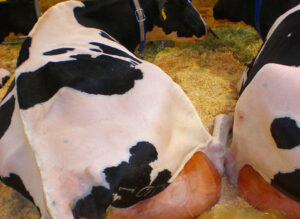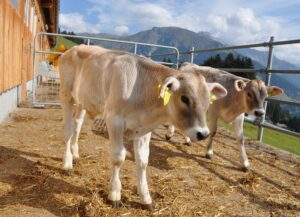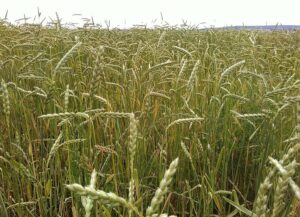Mercedes Gonzalez & Fernando Diaz
Flavorings are food additives that modify the taste or smell of food and increase its palatability. In ruminant feeding they are used with the aim of promoting voluntary intake without increasing caloric intake. At some particular times in the production cycle such as weaning, they are especially useful to stimulate animals to eat their ration and avoid weight losses or growth delays.
One type of flavoring is high-intensity sweeteners, which at low doses have an intense sweet taste. In general, they are obtained by chemical synthesis, although they can also have natural origin; examples include saccharine, aspartame or sodium cyclamate.
The sweetness value of these high-intensity sweeteners is compared in relation to sucrose: if a solution of 30 mg/l of sucrose at 20°C is given a value of 1, the sweetening power of these flavorings is considered to correspond several hundred times that of sucrose, so they are especially attractive to animals.
In addition to assessing the effect on improving average daily feed intake, a group of researchers (Chen et al., 2020) studied whether the addition of different high-intensity sweeteners to ruminant rations had an effect on average daily weight gains, whether it influenced the development of intestinal villi, or whether it had any impact on the gut microbiota.
In general, previous studies have described that ruminants prefer feeds supplemented with sweetener additives, but the results have been variable due to the effect of other factors, such as appetite, food texture, presentation (pellets or flours), and postprandial feedback of the gastrointestinal tract. The stress and nutritional status of animals also influence this variability.
Steviol glycosides and neohesperidin dihydrochalcone (NHDC) are natural derivatives of Stevia rebaudiana a plant also known as “candyleaf”. They have tissue inflammatory reducing effects and have also been reported to have prebiotic effects on the gut microbiota in livestock. In combination with saccharine, NHDC demonstrated increased dietary supplement intake (200 mg/kg concentrate) according to one study (McMeniman et al., 2006) on days 1 and 3, but the results were not consistent throughout the study.
Saccharine is a safe artificial additive for calves at a dose of 150 mg/kg
The effect of supplementing with high-intensity sweeteners on intake and weight gain in ruminants is variable depending on the additive used, and it was low in this study. Aspartame at a dose of 200 mg/kg had no effect on lambs, but the combination of saccharine with NHDC at a dose of 100, 200 and 300 mg/kg increased average daily intake. Saccharine is a safe artificial additive for calves at a dose of 150 mg/kg, and since it has a slightly bitter or metallic taste it is usually used in combination with other additives. Cattle have shown no preference for aspartame.
The use of high-intensity sweeteners has also been described as stimulating the development of intestinal villi in young ruminants, increasing nutrient absorption and promoting growth, more research however is needed to confirm these results.
In some cases, the use of naturally sourced sweeteners such as NHDC in combination with saccharine has reduced diarrhea on calves and improved production, possibly due to changes in the intestinal population of Lactobacillus. The prebiotic effect of NHDC while interesting, needs more studies to verify the exact mechanisms on the gut microbiota.
It has also been suggested that high-intensity sweeteners could have an anti-inflammatory effect on the gut, as they promote the secretion of glucagon-like peptide type 2 (LPG-2) by enteroendocrine L cells in calves. LPG-2 has beneficial effects on the intestinal function, such as promoting the development of the intestinal barrier, nutrient absorption, and reducing inflammation.
However, a recent study showed that neither NHDC and saccharine supplementation, nor LPG-2 injection influenced local and systemic inflammatory response in calves infected with Cryptosporidium parvum (Connor et al., 2017). Supplementation with high-intensity sweeteners can improve the growth of intestinal villi, promote glucose absorption and reduce intestinal lesions, more studies are needed however to better verify these effects.
Further studies on the doses and administration times would need to be conducted in order to better determine the effects of high-intensity sweeteners on the actual increase in intake and average weight gain in growing calves.
Reference
Juncai Chen, Yan Lei, Yang Zhang, Shiqian He, Lingbin Liu, Xianwen Dong. Beyond sweetness: The high-intensity sweeteners and farm animals. Animal Feed Science and Technology. 2020 Sept; 267: 1-11.
© 2020 Dairy Knowledge Center. All Rights Reserved.








